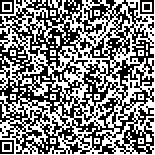| 引用本文: | 杨修猛,刘文玉,韩凤清,韩继龙,HUSSAIN Syed Asim,年秀清,毛庆飞,严维德.应用核磁共振技术分析干盐湖地区地下卤水空间分布特征——以昆特依干盐湖为例.湖泊科学,2018,30(1):220-233. DOI:10.18307/2018.0122 |
| YANG Xiumeng,LIU Wenyu,HAN Fengqing,HAN Jilong,HUSSAIN Syed Asim,NIAN Xiuqing,MAO Qingfei,YAN Weide.Application of nuclear magnetic resonance (NMR) technology to study the space distribution features of underground brine from playa lakes:A case study of Kunteyi Playa Lake. J. Lake Sci.2018,30(1):220-233. DOI:10.18307/2018.0122 |
|
| |
|
|
| 本文已被:浏览 6999次 下载 4185次 |

码上扫一扫! |
|
|
| 应用核磁共振技术分析干盐湖地区地下卤水空间分布特征——以昆特依干盐湖为例 |
|
杨修猛1,2,3, 刘文玉1,2,3, 韩凤清1,2, 韩继龙1,2,3, HUSSAIN Syed Asim1,2,3, 年秀清1,2,3, 毛庆飞1,2,3, 严维德4
|
|
1.中国科学院青海盐湖研究所青海省盐湖地质与环境重点实验室, 西宁 810008;2.中国科学院盐湖资源综合高效利用重点实验室, 西宁 810008;3.中国科学院大学, 北京 100049;4.青海省水文地质工程地质环境地质调查院, 青海省水文地质及地热地质重点实验室, 西宁 810008
|
|
| 摘要: |
| 昆特依干盐湖位于柴达木盆地西北部,为特大型综合盐类矿床.大盐滩是昆特依干盐湖内最大的盐滩,地下赋存有一定量的卤水矿床,但该矿床的水文地质条件差,主要卤水矿层含水性弱,开采难度大.核磁共振找水方法作为当今世界上唯一的直接找水地球物理新方法,具有高分辨力、高效率、信息量丰富和解的唯一性等优点,本文运用该方法对昆特依干盐滩地区地下卤水空间分布特征进行研究,通过对核磁共振数据进行处理与反演,结合已有的地质与钻井资料,对测点进行综合地质地球物理解释,获得以下认识:1)大盐滩0~130 m深度范围内,共存在3个卤水含水层,主要呈扁平状或漏斗状、近似层状展布,W1为晶间潜卤水层,渗透系数较大,颗粒较粗,单位体积含水量为0.4%~2.7%,W2和W3为晶间承压卤水层,渗透系数较小,颗粒较粗,单位体积含水量分别为0.2%~1.1%和0.1%~0.8%;2)大盐滩地区存在两个卤水富集区,分别为研究区西南部沉积盆地中心的Ⅰ号富卤区和盆地东北部的Ⅱ号富卤区;3)根据区域内卤水富集分布以及构造情况,划定大盐滩向斜沉积中心、大盐滩北侧F1~F8及遥F6断裂发育区和冷湖构造带为区域内主要的找矿找水远景区;4) GMR核磁共振系统在干盐滩地区理论探测深度为130 m,该系统不仅可以有效地探测自由水,而且可以依据束缚水的分布解译地下各类含水盐类矿物和含水黏土矿物的存在与分布. |
| 关键词: 核磁共振技术 干盐湖 地下卤水 柴达木盆地 盐湖资源 昆特依干盐湖 |
| DOI:10.18307/2018.0122 |
| 分类号: |
| 基金项目:青海省应用基础研究计划项目(2014-ZJ-702)和中国科学院青海盐湖研究所“一三五”战略发展规划项目联合资助. |
|
| Application of nuclear magnetic resonance (NMR) technology to study the space distribution features of underground brine from playa lakes:A case study of Kunteyi Playa Lake |
|
YANG Xiumeng1,2,3, LIU Wenyu1,2,3, HAN Fengqing1,2, HAN Jilong1,2,3, HUSSAIN Syed Asim1,2,3, NIAN Xiuqing1,2,3, MAO Qingfei1,2,3, YAN Weide4
|
|
1.Key Laboratory of Salt Lake Geology and Environment of Qinghai Province, Qinghai Institute of Salt Lakes, Chinese Academy of Sciences, Xining 810008, P. R. China;2.Key Laboratory of Comprehensive and Highly Efficient Utilization of Salt Lake Resources, Chinese Academy of Sciences, Xining 810008, P. R. China;3.University of Chinese Academy of Sciences, Beijing 100049, P. R. China;4.Key Laboratory of Hydrogeology and Geothermal Geology of Qinghai Province, Hydrogeology, Engineering and Environmental Geology Survey Institute of Qinghai Province, Xining 810008, P. R. China
|
| Abstract: |
| Kunteyi Playa Lake, located in the northwest of Qaidam Basin, is an extremely large comprehensive salt deposit. The Great Salt Beach is the largest salt beach in the Kunteyi Playa Lake with underground brine deposit, poor hydrogeological conditions, and extremely low water content in the main seam, so it is difficult to exploit. Nuclear Magnetic Resonance (NMR) is a effective geophysical method currently used to detect groundwater directly. Comparing with the traditional geophysical methods, the NMR method is of higher resolution, more efficiency, more information and unique interpretation for hydrogeological investigations. In this paper, NMR sounding is used to study the space distribution characteristics of the underground brine. The NMR data were processed with the inversion, combined with geological and drilling data, and integrated with geological and geophysical interpretation for each measuring point. We find that in Kunteyi Playa Lake there are three brine aquifers exists from 0 to 130 m below the surface. The distribution of three brine aquifers is like funnel-shaped or approximate layer. The W1 is latent brine formations, large permeability and coarse grain, with per unit volume of water of 0.4%-2.7%. The W2 and W3 are pressurized brine, low permeability and coarse grain, with per unit volume of water of 0.2%-1.1% and 0.1%-0.8% respectively. There existed two brine enrichment regions in the study area, the southwest centre of the exploration basin and the northeast basin. According to the distribution of brine and the structure in this area, we delimitate prospecting area of underground brine, the depositional centre of Great Salt Beach Synclinal, fault F1 to F8 and remote sensing fault F6 development areas in the north of the Great Salt Beach, cold-lake Structural belt. In dry salt lake area, the reliable detection depth of GMR system is 130 m. GMR systems can detect not only free water effectively, but also distribution of bound water to interpret the distribution rule of water-bearing salt minerals and aquiferous clay minerals. |
| Key words: Nuclear magnetic resonance playa lakes underground brine Qaidam Basin salt lake resources Kunteyi Playa Lake |
|
|
附件
|
|